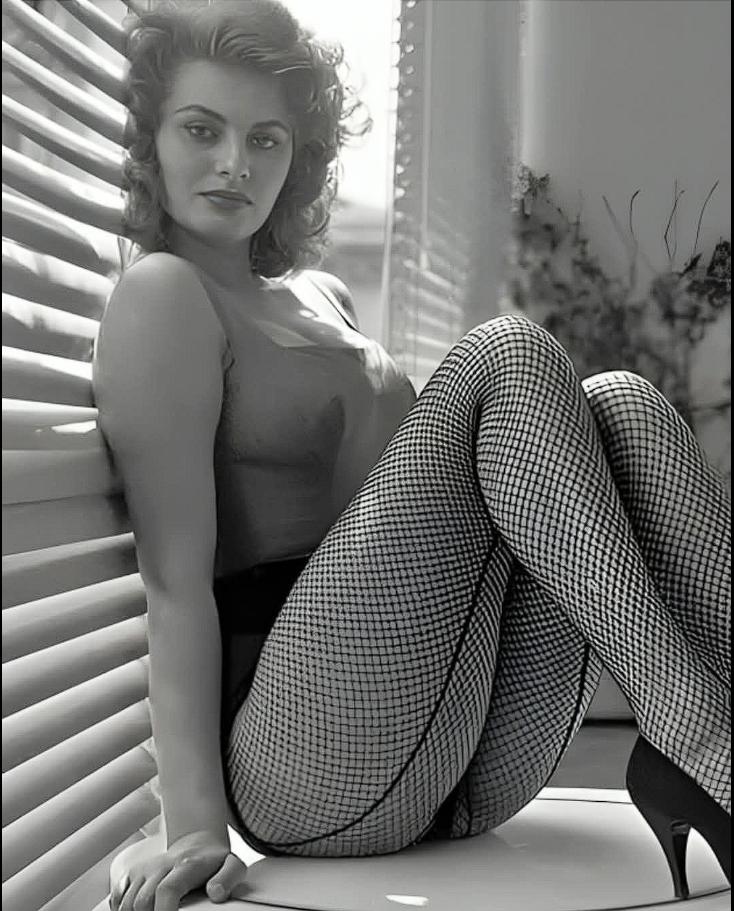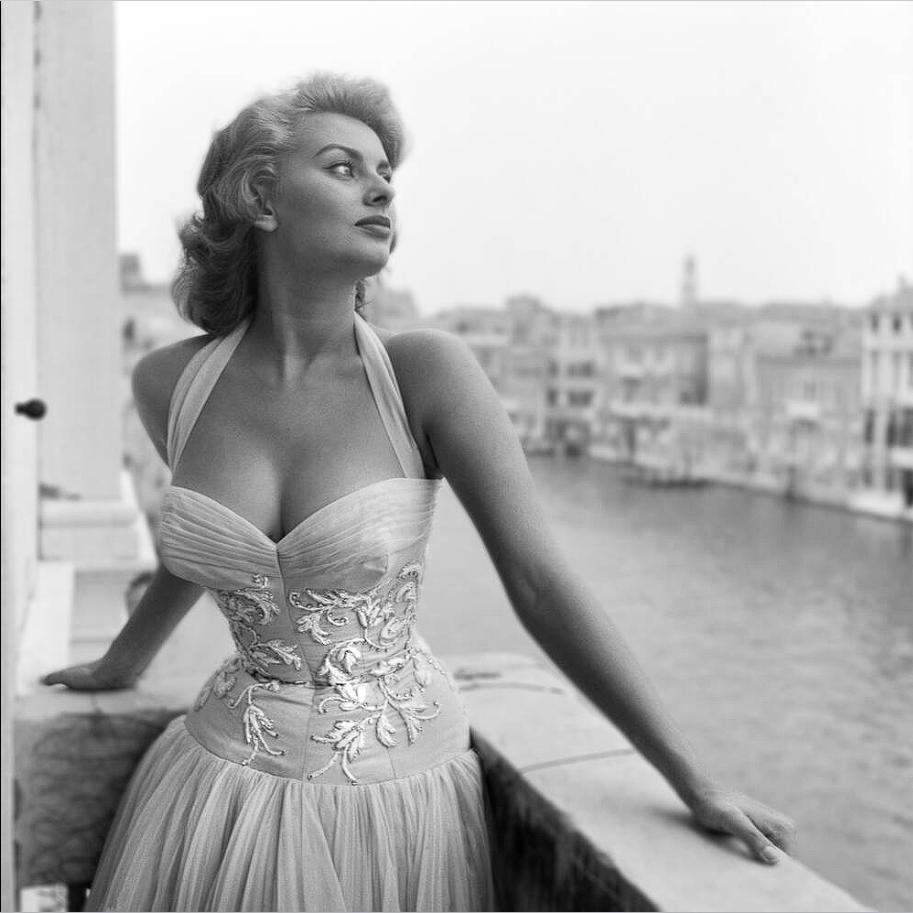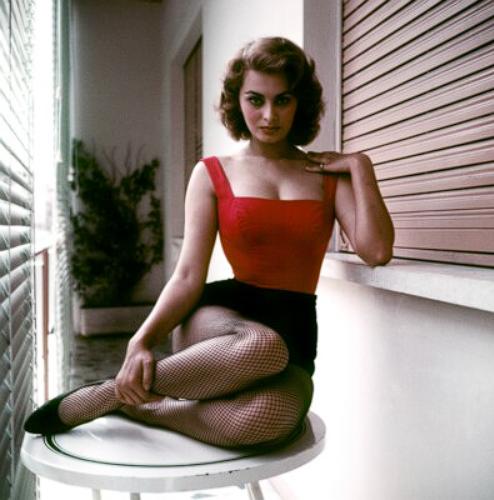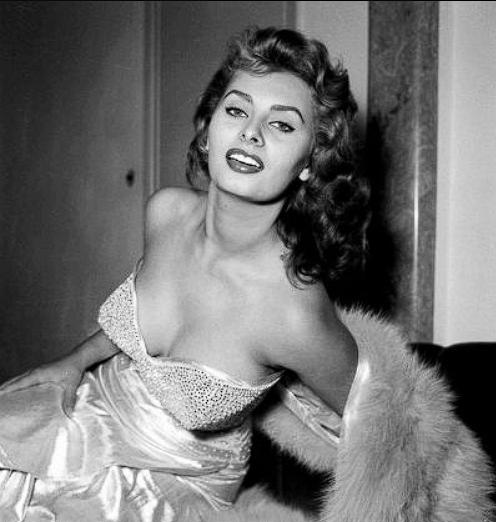Sophia Loren in 1955: The Year a Legend Was Born
Before the Oscars and the Hollywood stardom, before she became a symbol of timeless beauty, there was a young woman in postwar Italy who refused to be defined by her poverty, her accent, or the curve of her hips. Her name was Sophia Loren—and 1955 was the year the world began to understand her power.

From Bomb Shelters to Beauty Contests
Growing Up in the Shadows of War
Born Sofia Villani Scicolone in 1934 in Pozzuoli, near Naples, Loren’s early life was marked by air raids, hunger, and shame. Her father had abandoned the family, leaving her mother to raise two daughters alone during World War II. Loren often recalled going to bed hungry, her thin frame and shy nature earning her the cruel nickname “toothpick.”
But her mother, Romilda Villani—a former aspiring actress herself—never stopped believing in her daughter. She entered Sophia into beauty contests not just for glamour, but for survival. When Loren was just 15, she was a finalist in the Miss Italia competition. The transformation had begun.
A Star Rises in Rome
From Extra to Leading Lady
By the early 1950s, Loren was playing bit parts in sword-and-sandal epics—often uncredited, usually silent. But even without lines, she stood out. Her beauty was undeniable, but it was the spark behind her eyes that lingered.
In 1954, director Vittorio De Sica cast her in The Gold of Naples. The role of a flirtatious pizza seller was earthy, comic, and entirely Neapolitan. It was no glamour role—it was character work. And Loren nailed it. De Sica would become a lifelong mentor.
1955: The Year She Took Control
Breakthrough Roles and a Fearless Presence
In 1955, Loren starred in Too Bad She’s Bad (Peccato che sia una canaglia) opposite Marcello Mastroianni. The film crackled with chemistry—two rising stars with working-class roots, challenging each other with wit and heat. Loren played a pickpocket who outsmarts the men around her—not just with seduction, but with intelligence.
The same year, she re-teamed with De Sica in Scandal in Sorrento and continued to work in comedies and dramas that demanded more than mere beauty. Directors were learning: this wasn’t just a model with a sultry walk—this was an actress who could carry weight, humor, and heartbreak.
1955 was also the year Loren stopped being dubbed over in her own movies. Her rich, distinctive voice—full of gravel and music—finally reached audiences directly. It was another layer of authenticity, another reminder that she wasn’t trying to be anyone else. She was Sophia.
Behind the Scenes: Love, Mentorship, and the Making of a Legend
The Carlo Ponti Partnership
Loren’s most pivotal relationship in this period was with producer Carlo Ponti. Nearly 20 years her senior, Ponti became both her professional champion and eventual husband. He believed in her range, her ambition, and her ability to conquer international markets. He secured better scripts, nurtured her confidence, and helped introduce her to global cinema—first France, then Hollywood.
But their romance, at the time, was complicated. Ponti was still legally married. The press speculated, the church frowned, and Loren remained defiant. Love, like her talent, would not be tamed by convention.
More Than a Pretty Face
Redefining the Female Archetype
What made Sophia Loren stand out in 1955 wasn’t just her appearance—it was the way she refused to be boxed in. She didn’t play the shy ingénue or the icy femme fatale. She was fire and laughter, dignity and flirtation. She brought working-class grit to roles that would have otherwise been mere ornaments.
And audiences loved her for it. She represented a new kind of femininity—sensual but grounded, confident without cruelty. She wasn’t reaching for Hollywood’s approval. She was bringing something of her own to the world stage: Italian spirit, vulnerability, and pride.
The Road Ahead
From Italy to the Oscars
Within a few years, Loren would be working with Cary Grant, Frank Sinatra, and Marlon Brando. In 1961, she would win the Academy Award for Two Women, becoming the first actor to win for a foreign-language performance. But those triumphs had their roots in 1955—the year she proved herself not just as a starlet, but as a force.
Even decades later, Sophia Loren’s presence feels alive. Her laugh, her defiance, her refusal to apologize for her power—they remain magnetic.
In a film world still learning how to write complex women, Loren’s early work is a masterclass in owning space and rewriting the rules.
